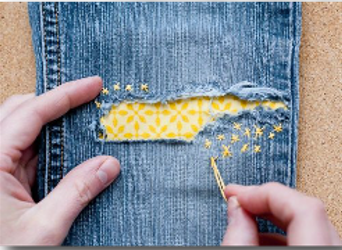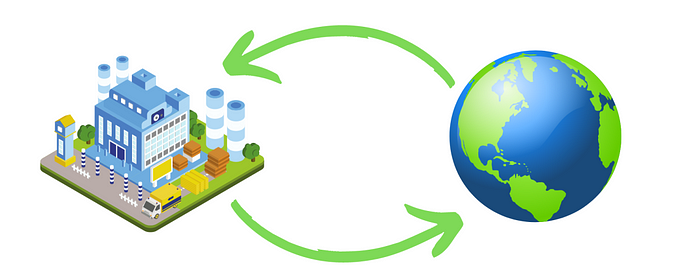Change of heart in fashion — Five observations that could ignite transformation at scale
I was recently invited to contribute to a book in sustainable fashion and this made me reflect on my work relationship with the sector. In my old days in brand consultancy, I had the opportunity to work with a few fashion brands and retailers, but my heart was never into it. I totally saw the value of creativity, self-expression, and all that. But the idea of creating desirability where there was no need, and the super-focus on driving sales volume and profit up above all else just felt plain wrong.
Fast forward to the work we’ve been doing at now-on, helping people and organisations to live and work more sustainably and facilitating change, and fashion became a sector I really enjoy working with. I had a chance to see it through the lens of foundations, non-for profits and purpose-led fashion businesses — and learnt the real power of this industry to transform itself into a more sustainable one, to bring people along with them and to create a positive impact — if it puts its mind into it.
Here are five observations that ignited this change in my relationship with the industry and that could inspire transformation at scale.
1. Designing value chains at the pace of nature
‘It’s a volume issue’, says one of our clients. The industry produces somewhere between 80 to 150 billion garments a year (yes, numbers vary a lot!) and nature just can’t recover at this pace. What are the alternative business models to make the industry prosper with less volume, and avoid the negative impact from extraction and waste? Good Growth’s landscape first approach is a good example — in addition to their work on the land and with communities, they develop brands that produce a controlled number of pieces per year, all made of natural fibers from regions where they work, respecting the land natural cycle and its capacity to regenerate itself.

2. Creatively making the most of what already exists
‘The most sustainable clothes are the ones in your wardrobe’, says another client responsible for a circular economy cooperative. By adopting a circular mindset and all its R’s (renting, reusing, repairing, refurbishing, repurposing, resale, recycling and more), brands are adjusting their operations and creating a longer-lasting relationship with their clients beyond a single transaction — something luxury brands have offered for a while and that is now coming to other retailers such Patagonia, Decathlon, Zara and Lululemon. Users are also unleashing their creativity and self-expression by creating their own personalised items, either by themselves or with the help of repair cafés all over the world, such as ReCostura’s in Portugal — a circular fashion non-for-profit we supported with strategic planning.

3. Putting plants in the wardrobe
‘I feel so inspired by nature’, says a designer I coached as she created her own interior design studio and textile brand. By refusing to work with fossil derived fabrics and seeking nature-based solutions, researchers and designers are discovering threads with incredible properties, such as the ones made of orange, apple, pineapple, fungi, coffee, bamboo and hemp. One must be careful to not incur the same problem of volume and stress on natural resources, but fabrics made of orange skin for example also solve issues around waste as they are made with by-products from citrus juice… and their natural oils containing vitamins A, C and E stay in the fabric, apparently improving one’s skin. Win-win-win.

4. Collaborating for impact at scale
‘I often feel it’s too big to tackle, but we must go on’, says a human rights in fashion specialist we interviewed as part of a large research and economic system mapping program we participated with nexial. Some professionals feel disheartened when we discuss all issues related to the fashion industry, such as environmental concerns, transparency (or lack of) in supply chain, human rights violations, new legislation… not to mention the ever changing and challenging macro-economic and political environment, sometimes delaying progress. But they’re not alone… there has been a growing body of coalitions and pre-competitive collaborations on specific supply chains such as Cotton 2040, led for eight years by Forum for the Future, one of our recent clients. Working with others outside your own organisation is paramount to drive change at scale — this ‘convening for system level impact’ toolkit is in public domain and provides lots of guidance and tools to support people navigating collaboration for systemic change.

5. Acting from a clear purpose and strong governance
‘Governance beyond compliance’, says our Governance and ESG expert. Fashion is super complex; it is easy to find dozens of intermediaries between a cotton plant being harvest and a shirt being worn. But it is the responsibility of every company to know the ins and outs of their business, and the double materiality perspective: what is the impact of the world in your business, and the impact of your business in the world. That commitment is often derived from clarity of purpose, strong values, and awareness of each one’s sphere of influence.

In the same way I had a change of heart in the way I engage with the fashion industry, I feel the industry is also changing its heart. Is it at the speed and depth it needs? Maybe not. But by looking at the sector through a systemic lens and exploring the right and often difficult questions, with the right partners, the fashion industry has a huge potential to recreate itself and inspire others to come along with it.
What else have you seen that are moving the fashion industry into a more sustainable one?
Author: Paula Oliveira, with thanks to all partners and clients mentioned for their knowledge, work and trust; and to Jeronimo Souza for his review of this article and continuous support.
